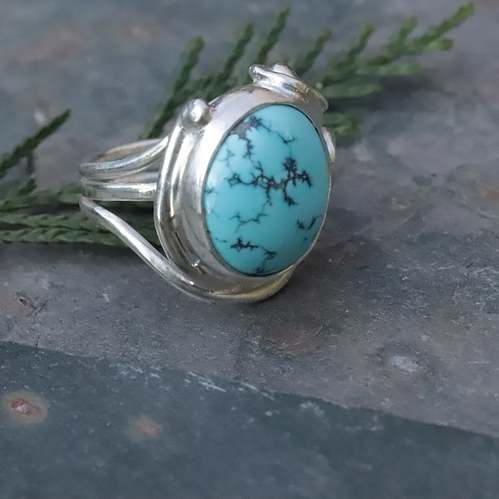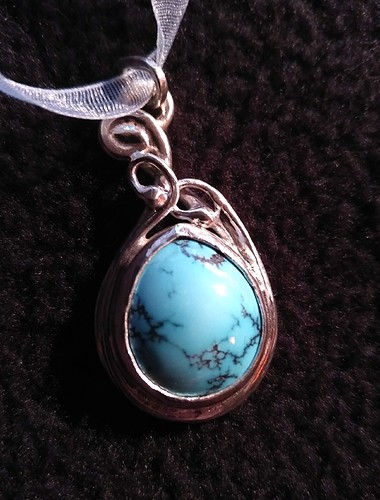I am looking for information on what classifies a stone as “dendrite turquoise”. I started collecting stones with a specific look that I referred to as dendrite stones…my own use of the descriptor before I learned that there actually is such a thing as a Dendrite pattern in turquoise and that it is considered rare. Some websites state that it is due to the formation of the turquoise around decaying vegetation, thus the fern like pattern, but other websites claim that it is just a variant of fine black spiderweb matrix. There doesn’t seem to be a consensus (that I can find) on what makes a stone “dendrite”. Pictured are two stones I thought of as dendrite in appearance before I knew there actually was such a thing.
my first thought?..tell mr. google to look at moss agate

Not applicable, I purchased these stones directly from the Blue Moon Mine near Tonopah. Thanks though.
Looking up dendrites/dendritic as terms reveals that it’s just an adjective for branch-like matrix, i…e, patterning that resembles the flow and look of tree branches. It’s not a specific group of stones from a specific mine, of course, so we’re still talking about Kingman, Candelaria, etc. Just a descriptor, like “spiderweb.”
@chicfarmer - Thank you! That was kind of what I thought when I used the term, but then I saw it being used in a more specific way and I probably ought not use the term anymore. One of my pet peeves is claiming that a stone is from a specific mine because “it looks like it”. If you don’t know…say you don’t know but that “it looks similar to_____”. So I certain don’t want to claim a descriptor that denotes something else.
One the attached website at the bottom of the FAQs, it states:
WHAT IS DENDRITE TURQUOISE?
Dendrite turquoise is produced by the crystallization of a foreign mineral, usually an oxide of manganese at the time the turquoise is being formed. Dendrite turquoise has a unusual fern-like pattern in the matrix and is very rare.
In “Turquoise Unearthed” by Joe Dan Lowry the description of Dendrite turquoise is similar to the one you posted from South West Silver. It states “Dendrite turquoise is exceedingly rare. The fern-like pattern in the matrix is produced by the crystallization of a foreign mineral, usually an oxide of manganese, at the time the turquoise itself is being formed.” The photo in the book shows turquoise with a pattern that looks likes the leaves of a fern. You can send photos of your piece for evaluation to the Turquoise Museum. I used them once and it was not expensive.
I pulled this definition off of the Gemselect website. It sums up what is going on with the inclusions of foreign materials in the turquoise. So basically if Iron or manganese has entered the turquoise cracks it can form branchlike patterns but I would not confuse this with matrix or other host materials. … ‘Dendrites’, a Greek word for ‘tree-like’, are inclusions that appear organic due to their plant-like structure, but they are actually inorganic traces of iron or manganese. The iron and manganese ions gain access to the forming stone as weathering solutions from neighboring rock. The impurities crystallize inside the agate in branching formations seeping through fine surface fractures. In some cases, dendritic inclusions may form in spotted clusters rather than branching structures; these are sometimes referred to as ‘mosquito stones’. Kyle
@snowday @greatrocks123 Thank you both for the research and explanations. I am intrigued and will certainly be looking into this more! Most appreciative!
The only dendritic turquoise I know came out of lone mt. and it was moss agate ( the fern like green)

